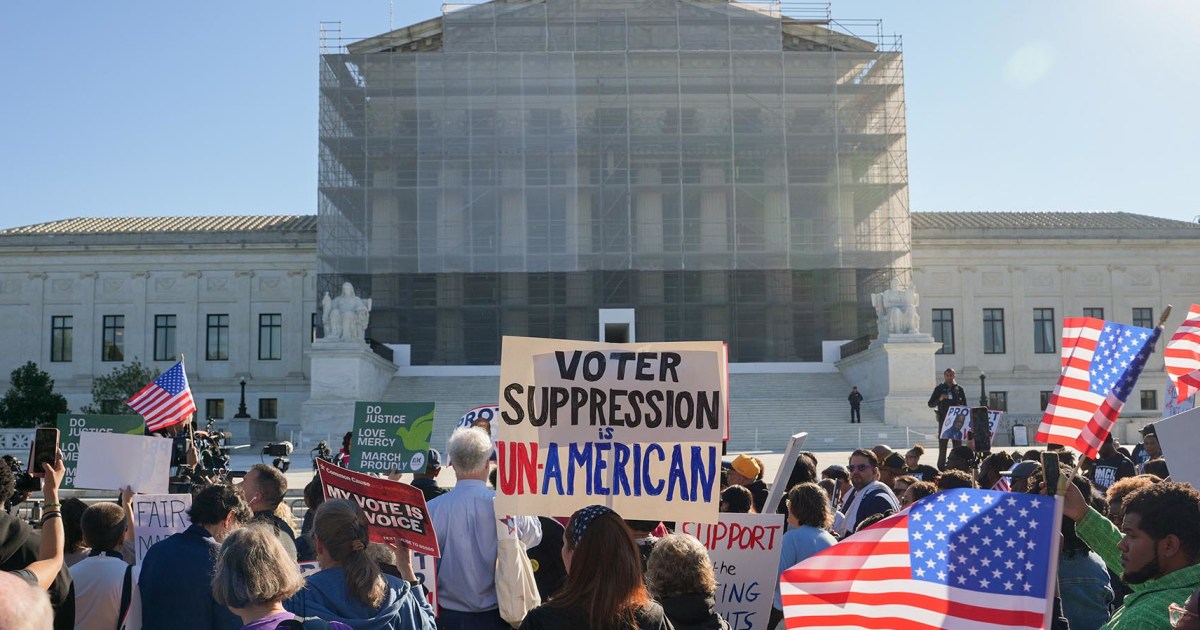Technology
Departing Miss. PD chief, officers detail struggles with city administrators over funding, staffing
By Margaret BakerThe Sun Herald
MOSS POINT, Miss. — Former Moss Point Police Chief Brandon Ashley didn’t mince words when explaining why he walked away from a department he once planned to retire from, after spending his entire 24½-year career in Moss Point law enforcement.
In a letter submitted in September — just weeks before his final day on the job on Oct. 3 — Ashley described his deep ties to the city where he grew up and began his career as a patrol officer.
| DOWNLOAD: How to fund a real time crime center (eBook)
But Ashley said his dedication to the city was no longer enough to overcome what he called years of neglect and lack of support from city leaders.
Ashley’s resignation became official Friday, joined by six other officers who also left the department. Other officers still on the force are in the process of interviewing for new jobs.
The Board of Aldermen has since appointed Dennis Stevenson, a retired Mississippi state trooper and pastor, to work as Interim Police Chief pending the appointment of a permanent replacement for Ashley.
The Sun Herald has since obtained the resignation letters of Ashley and the officers who followed him out the door, offering a rare look at the police department’s mass exodus of more than half its police force.
Ashley decided to step down following a five-day unpaid suspension for failing to notify city officials about the arrest of former K-9 Officer Craig Chandler on a domestic violence charge — a case that later ended in conviction.
The arrest only came to light after word of the charges spread online, along with a video of an unrelated domestic assault involving Chandler. The case resurfaced when a judge allowed Chandler’s estranged wife to refile the charges, ultimately leading to his conviction in Jackson County Justice Court.
After the city leaders learned of Chandler’s arrest and fired him in August, Mayor Billy Knight announced he had “lost all confidence” in Ashley’s leadership.
That statement, Ashley said, was the breaking point.
“When that happened,” Ashley wrote, “I knew I would be unable to continue to lead a department that is constrained by the very city it is meant to serve.”
‘Little to no support’ from City Hall
Ashley, who joined the department as a patrol officer before working his way up through the ranks to police chief in 2018, said he led the force through “some of its most trying times” — including devastating hurricanes, the COVID-19 pandemic, and chronic staffing shortages.
“During our lowest points, I never hesitated to put the badge back on and work patrol shifts myself,” he wrote.
He said he often filled other roles as well — fleet maintenance supervisor, training coordinator, and patrol supervisor — just to keep the department functioning.
Ashley launched several community programs, including Community Strides, to rebuild trust between officers and residents. But those efforts, he said, couldn’t make up for the city’s lack of investment.
“Programs and patrols do not hold a department together — leadership and support do,” he wrote. “And unfortunately, over the past four years, we have received little to none from the city’s administration.”
Pay, staffing and outdated equipment
Ashley also highlighted four years without pay raises for officers. The last raise, he said, came only after “grueling negotiations” with city officials that forced him to cut key leadership positions — deputy chief, captain and lieutenant — to free up money for all the officers.
“There is no path to advancement, no vision for the future, no investment in the people who risk their lives every single day,” he said.
He said officers are still driving outdated patrol cars and other vehicles because the city has not funded the purchase of new vehicles in two decades.
“How do you expect this department to succeed when it is expected to survive on scraps?” Ashley said.
In closing, Ashley shared a sharp rebuke of city leaders.
“This administration has made it clear that the police department is not a priority despite public statements and campaigns centered on improved public safety,” he wrote. “Without bold leadership and meaningful support from City Hall, the future of this department — and public safety in Moss Point — will remain uncertain and at risk.”
Officers echo same frustrations, safety issues
Letters from the six officers who resigned with Ashley echo many of the same grievances — especially over poor morale, unsafe staffing levels, and lack of city support.
Sgt. Kimberlee Snowden, a 36-year law enforcement veteran who spent the last decade in Moss Point, said she could no longer work for a city where the mayor and board “consistently undermine” the police department.
She said the decision over recent years to eliminate patrol and leadership positions left Moss Point “critically understaffed — often with only two patrol officers covering the entire city,” creating dangerous conditions for both officers and residents.
Snowden called Ashley’s suspension “unwarranted and procedurally flawed” and criticized Mayor Knight’s public comments about him as “unjustified and inappropriate.”
“For a sitting mayor to publicly undermine a police chief who has devoted 24½ years of loyal service to this city and department only worsens the already fragile morale within the ranks,” she wrote.
She described officers facing burnout from mandatory overtime due to staffing shortages, and said the department’s problems are the direct result of political interference and neglect by city leaders.
In closing, Snowden wrote, she could “no longer stand by while this department is slowly torn apart — its people overworked, unsupported and undervalued.”
Longtime officers cite burnout, lack of support, advancement
Sgt. Marquese Davis, an 11-year veteran, said he had no opportunities to advance despite working in multiple roles. During his time with the department, Moss Point cycled through four police chiefs, he noted.
“The mayor and board always seem to be at odds with the chief of police,” Davis wrote. “This is far from conducive to a stable working environment.”
Detective Jamie Chapman, who served nine years, said she worked countless unpaid hours covering patrol shifts in addition to her caseload as a detective.
“There is no money in the budget,” she wrote.
When Knight suspended Ashley and publicly seized his badge, gun, phone and city vehicle, Chapman said, it put all Moss Point officers in greater danger.
“My resignation is not due to dissatisfaction with the department or its leadership,” she wrote, “but is solely in protest of the mayor’s continued blatant disrespect” for Chief Ashley and the police department.
A citizen’s attack and dangerous conditions
Other officers who resigned, including Tyrone Baker and Detective Bryanna Williams, expressed similar concerns.
Williams, who came to Moss Point five years ago, said her decision to leave was cemented after a recent city board meeting where “a citizen attempted to strike me” but instead struck the police chief.
She said the incident underscored the increasingly hostile climate officers face.
She said she has “deep respect” for Chief Ashley but could no longer serve in Moss Point because of ongoing concerns over officer safety, lack of support, salary and the constant turmoil with city officials.
Baker pointed out early on how staffing levels put the officers at great risk and said the city administration has elected to “systematically defund the police department.”
“I’ve been shot at in the city,” he said. “I still have a bullet hole in my car. We respond alone to calls that no officer should respond to alone. We should have multiple officers responding to a domestic (incident). We should have multiple officers responding to a shooting. That’s not what happens.”
Another officer, Rebecca Rasanen, said she could no longer stay on at a police department that will continue to have a lack of support from the mayor and Board of Aldermen.
After pointing out a litany of issues echoed by the other officers, Rasanen also pointed to “confusion in the chain of authority” in the police department due to interference from city officials.
“While I respect the roles of the mayor and aldermen, their direct interference undermines the chain of command and the department’s ability to function independently and fairly.”
Alderman addresses lack of support, funding
Alderman Wayne Lennep said he has some regrets about how the city handled funding for the police department. “In hindsight, I just wish I had personally done more to bring attention to the department’s budget needs,” said Lennep, who serves on the city’s budget committee.
“The previous fiscal year (2024), the city’s revenues didn’t come in as projected, and we were facing about a $2 million deficit. To balance the budget, we had to raise taxes and make cuts across every department heading into fiscal year 2025.”
To help ease the shortfall, Mayor Billy Knight, Lennep and two other aldermen — David Chapman and Darius Wilson — voluntarily took pay cuts, saving the city an estimated $50,000 to $60,000 in salaries. “We felt like we were cutting everyone else, so we wanted to do our part,” he said.
Lennep said Ashley’s assessment of the department’s lack of support and funding was accurate. “It’s true — he ran the police department his entire tenure without it ever being fully funded,” Lennep said, noting that other departments faced similar challenges.
“Looking back, I wish I had done more to find ways to shift additional funds to the police department, even if that meant making cuts elsewhere.
“I regret that we didn’t sit down with the chief to take a harder look at his needs and how we might have provided at least some of the funding he asked for. I just wish we had focused more on how to help instead of simply offering criticism.” In the spring of 2024, the city hired Fire Chief Jason Davis at an annual salary of $90,000 — a move that drew criticism from employees over pay disparities between the fire and police departments. To justify the higher salary, Davis agreed to take on additional responsibilities within the fire department, much like Ashley had done for years.
Shortly afterward, the city raised Ashley’s salary from just under $75,000 to $80,000 a year.
The city operates on an annual budget of $20 million, with $8.3 million in the general fund, where the money for most of the salaries, including that of police and fire personnel, is paid.
© 2025 The Sun Herald (Biloxi, Miss.). Visit www.sunherald.com. Distributed by Tribune Content Agency, LLC.



















